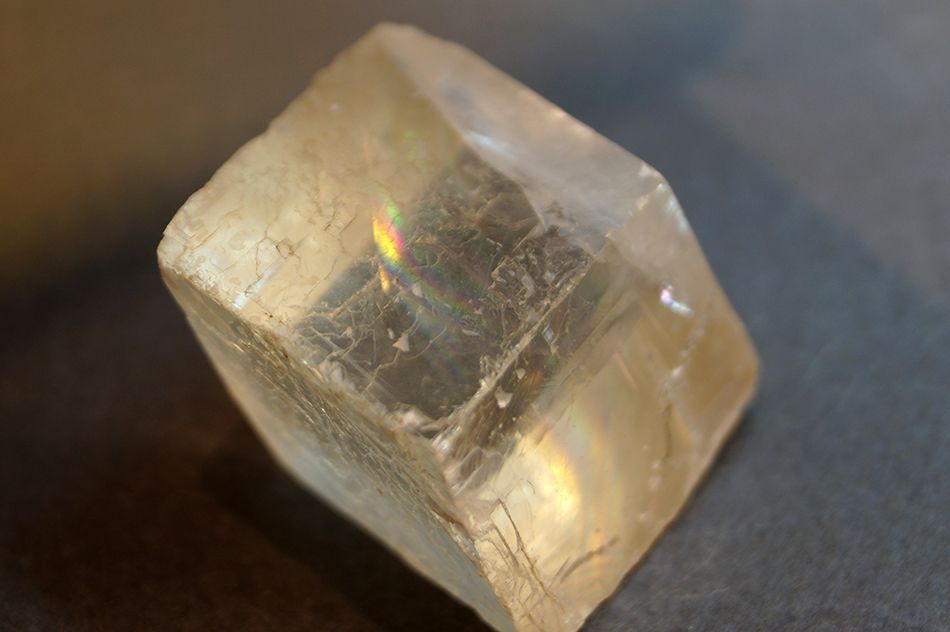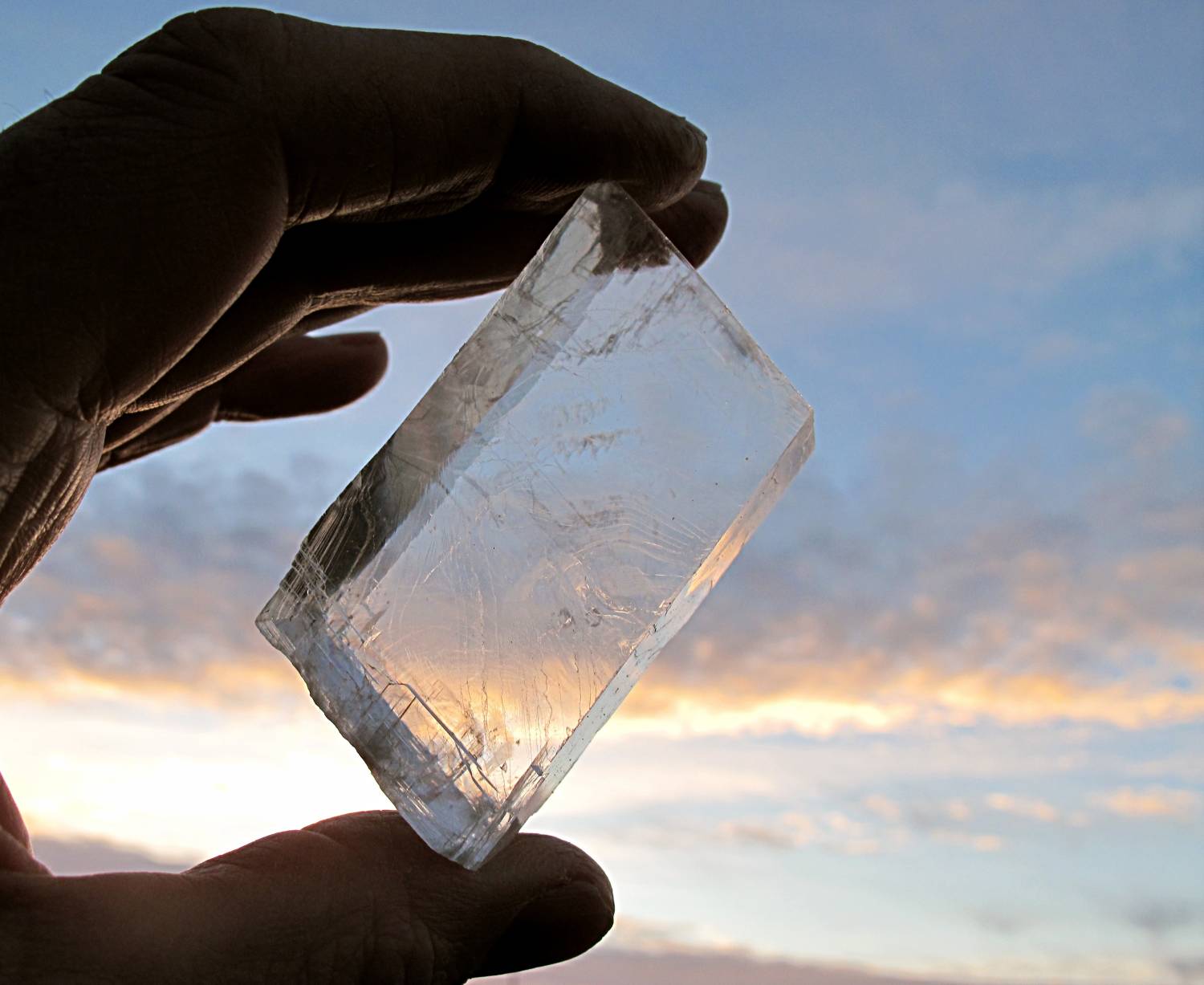 Calcite or Iceland spar
Calcite or Iceland sparThe Vikings surveyed a large number of territories lying far beyond Scandinavia. In the IX — XI centuries they traveled from Ireland to Russia, and possibly much further. In the 10th century, they also discovered Greenland. But how were they oriented in the endless expanse of water, without having any serious navigation tools? After all, they definitely did not have a compass, this technology reached Europe by the end of the 16th century.
The Viking sagas and some other documents state that they plied the seas and oceans with the help of certain “sun stones” that helped them determine the position of the Sun in the sky, even when the sky was completely covered with clouds. The fog also was not an obstacle to the "sun stones", the sun they "saw" perfectly. For a long time it was believed that all this was just a legend, but now some historians
claim that the “sun stones” could well exist.
One of the first mentions of the mysterious stones relates to the life story of King Olaf, who ruled Norway in the late 900s and early 1000s (with an almost record term of government for that time). So, in one of the sagas, where it was told how the Vikings settled Greenland, some stones were mentioned that gave the king the opportunity to see the position of the Sun on the sky covered with clouds.
All this may resemble some kind of witchcraft, but these stones are mentioned as inventory in some temples from Iceland. An archaeologist named Thorwild Ramscu suggested that these stones were actually used as navigation tools. Archaeologists and historians believe that it was ordinary calcite, whose crystals are able to polarize light.
Wikipedia
explains the method of navigation with a stone as follows: “When observing cloudy areas of the sky and rotating the crystal, areas in the sky can be detected, from which, as a result of Rayleigh scattering, completely polarized light emanates. Perpendiculars to the line connecting such areas indicate the position of the obscured sun. ” A number of experiments in 2011 showed that calcite is really able to indicate the direction where the Sun is, with an error of only a few degrees, even at dusk. A new study shows that the Vikings sailed from Norway to Greenland, using just such a stone.
The path is not long, the distance is about 2000 km, in those conditions it was about three weeks. Using a computer program, the researchers created a model of Viking travels, adding to the model about 1000 “voyages” from Bergen to a settlement on the southern coast of Greenland. The model showed that the stone could well indicate the location of the Sun in the sky and help the Vikings get to the most distant points of their travels.
Scientists have added calcite stones to the model as navigation tools, indicating the exact error for each of them. As it turned out, the probability of reaching the desired point using this kind of navigation method is quite high - 92%. Probably, this indicator is much higher than that of other peoples, seafarers of the time. True, in order to achieve such accuracy, the person who plotted the course needed to be checked with a stone every three hours. If the period increased, and through the stone looked at the sky every four hours, the probability of successful completion of the journey was reduced to 32-58%. Well, if you look at the sky every six hours, you could not know where to swim away - the probability of reaching the desired point was reduced to 10%.
If the Vikings rarely looked at the sky through a solar stone, sailing to Greenland, they could sail to the Atlantic Ocean or reach North America. Perhaps such a mistake helped them to get to the shore of Newfoundland in the 1000th year.

Of course, all this is only a model of real travel. In addition to navigation, the Vikings needed to be able to cope with storms, currents, and winds. But they, as far as can be judged, were quite capable of this, and therefore they floated so far, getting to where they needed to be.
Unfortunately, so far archaeologists can only assume that calcite or a mineral with similar properties was used by the Vikings. There is no real evidence of this - calcite was not found in the graves of the Vikings or in the places of their settlements. True, a piece of calcite was found in the sunken ship of the British, which sank in 1592. And this calcite was located close to the navigation tools, so it is quite possible that it was also used as a tool.
The most interesting thing is that the idea of using polarizing stones is not at all new. Pieces of plastic with the corresponding properties used by the pilots of Scandinavian airlines in some cases. And this is not an invention at all, but a
real story . Pilots were guided where the compass did not work too well. So the pilots of the 20th century could well use the same method of navigation as the Vikings.
DOI:
10.1098 / rsos.172187